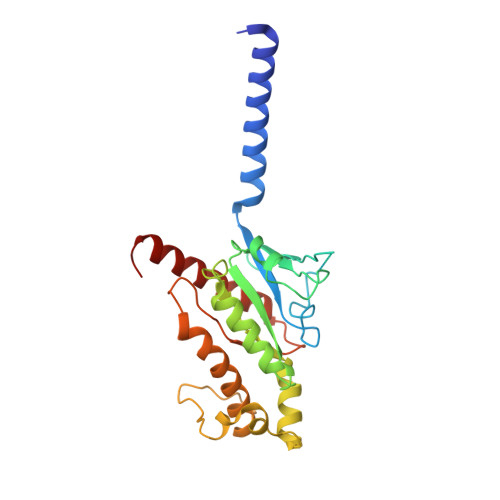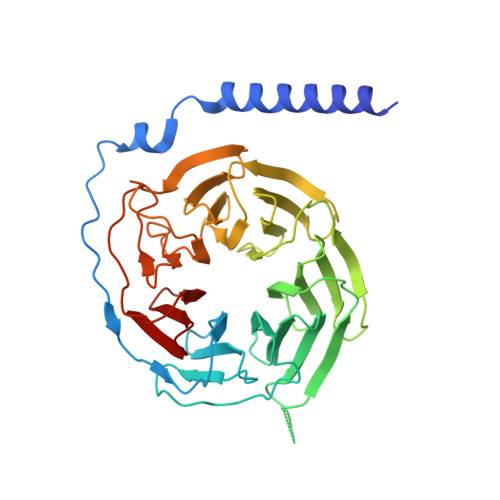The versatile binding landscape of the TAAR1 pocket for LSD and other antipsychotic drug molecules.
Jiang, K., Zheng, Y., Zeng, L., Wang, L., Li, F., Pu, J., Lu, Y., Zhao, S., Xu, F.(2024) Cell Rep 43: 114505-114505
- PubMed: 39002128
- DOI: https://doi.org/10.1016/j.celrep.2024.114505
- Primary Citation of Related Structures:
8ZSJ, 8ZSP, 8ZSS, 8ZSV - PubMed Abstract:
Increasing global concerns about psychoactive substance addiction and psychotic disorders highlight the need for comprehensive research into the structure-function relationship governing ligand recognition between these substances and their receptors in the brain. Recent studies indicate the significant involvement of trace amine-associated receptor 1 (TAAR1) in the signaling regulation of the hallucinogen lysergic acid diethylamide (LSD) and other antipsychotic drugs. This study presents structures of the TAAR1-Gs protein complex recognizing LSD, which exhibits a polypharmacological profile, and the partial agonist RO5263397, which is a drug candidate for schizophrenia and addiction. Moreover, we elucidate the cross-species recognition and partial activation mechanism for TAAR1, which holds promising implications from a drug discovery perspective. Through mutagenesis, functional studies, and molecular dynamics (MD) simulations, we provide a comprehensive understanding of a versatile TAAR1 pocket in recognizing various ligands as well as in the ligand-free state, underpinning the structural basis of its high adaptability. These findings offer valuable insights for the design of antipsychotic drugs.
- iHuman Institute, ShanghaiTech University, Shanghai, China; School of Life Science and Technology, ShanghaiTech University, Shanghai, China.
Organizational Affiliation:





















